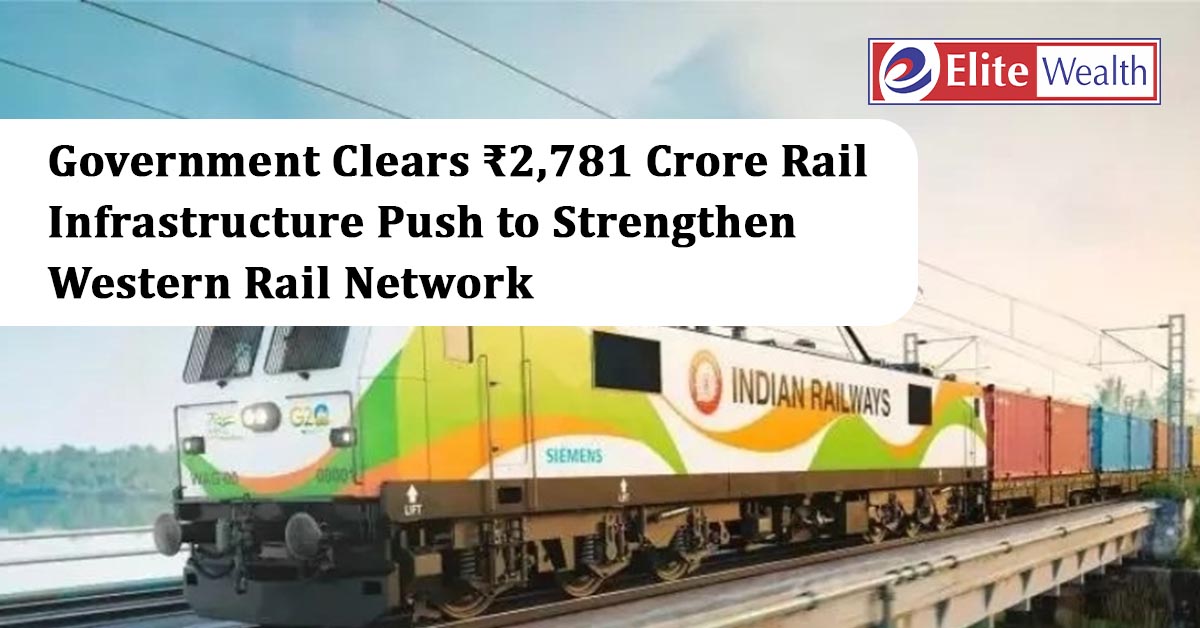
The Union government has approved two major railway capacity-building projects valued at nearly ₹2,781 crore, marking another step toward strengthening India’s transport ecosystem. The projects were sanctioned by the Cabinet Committee on Economic Affairs (CCEA), led by Prime Minister Narendra Modi, following proposals submitted by the Ministry of Railways.
Strengthening Rail Capacity Across Gujarat and Maharashtra
The fresh approvals include:
- Doubling of the Devbhumi Dwarka (Okha)–Kanalus rail line covering 141 km
- Development of the 3rd and 4th rail lines between Badlapur and Karjat spanning 32 km
Together, these upgrades will add approximately 224 km of rail capacity. The enhanced network is expected to reduce congestion, improve operational speeds, and ensure greater efficiency for both freight and passenger movement.
A Boost to Regional Connectivity and Economic Growth
The projects have been planned under the framework of the PM Gati Shakti National Master Plan, which focuses on coordinated infrastructure development and multi-modal transport planning. With improved connectivity across four districts of Gujarat and Maharashtra, the initiative is expected to directly benefit around 585 villages representing a population of nearly 32 lakh people.
Aligned with the vision of Atmanirbhar Bharat, the projects are also anticipated to generate a range of job opportunities—both during construction and in downstream economic activity—stimulating local growth.
Key Corridor Advantages
Kanalus–Okha Line Doubling
The upgraded rail section will improve travel convenience to popular pilgrimage sites such as the Dwarkadhish Temple, while strengthening logistics and trade in the Saurashtra region.
Badlapur–Karjat Additional Lines
Located along a key segment of the Mumbai suburban rail network, the expansion is expected to relieve overcrowding, accommodate increasing passenger volumes, and improve connectivity toward southern India.
Logistics Support, Sustainability and National Impact
Once operational, the upgraded corridors will significantly enhance freight handling capacity—estimated at an additional 18 million tonnes per annum (MTPA). Key commodities such as cement, containers, petroleum products, coal, and salt will move more efficiently, strengthening supply chains and industrial output.
The initiative is also expected to support India’s broader environmental commitments. Increased freight movement by rail—one of the most energy-efficient transport modes—may help reduce fuel imports by an estimated 3 crore litres and cut carbon emissions by approximately 16 crore kg, comparable to planting nearly 64 lakh trees.
Summary
The approval of these two rail infrastructure projects marks a strategic investment in India’s transportation future. By easing congestion, expanding capacity, supporting economic activity, and contributing to environmental goals, this ₹2,781 crore initiative aims to deliver long-term benefits to citizens, industries, and regional development across Gujarat and Maharashtra.
Disclaimer:
This article is intended solely for educational and informational purposes. The securities or companies mentioned are provided as examples and should not be considered as recommendations. Nothing contained herein constitutes personal financial advice or investment recommendations. Readers are advised to conduct their own research and consult a qualified financial advisor before making any investment decisions.
Investments in securities markets are subject to market risks. Please read all related documents carefully before investing.
